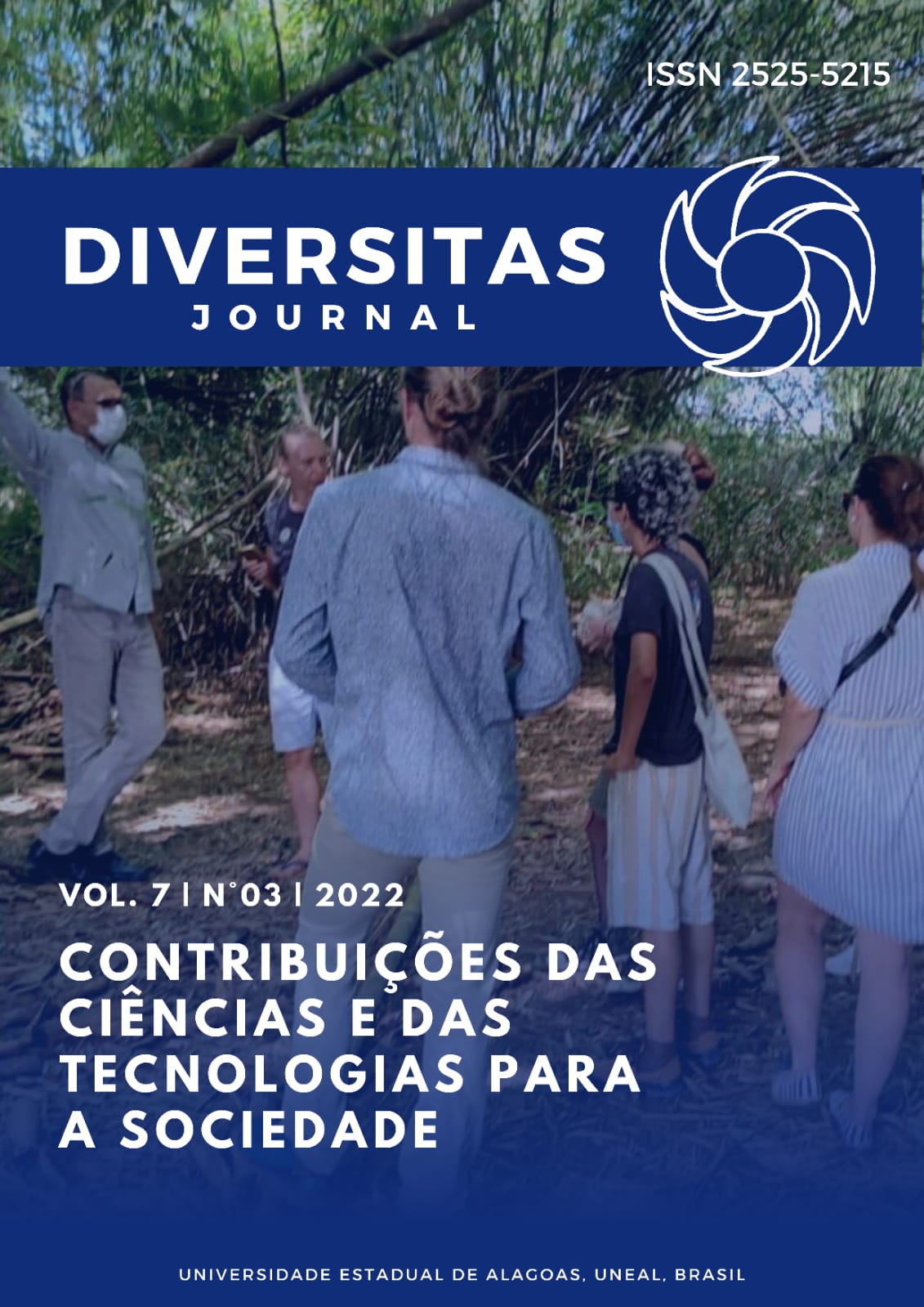Fausto Neto e a virada nos estudos da Literatura de Cordel
O divisor de águas no Cordel
DOI:
https://doi.org/10.48017/dj.v7i3.2354Keywords:
Literatura, Popular, BrasilAbstract
The research on Literature of Cordel has been standing out for the diversity of new looks about it. However, before this epistemological profusion, there was a watershed in their research, the work "Cordel ideológico de punição" by Fausto Neto (1993). Through a bibliographical study, we will analyze the innovations that this research brought and raised new views about Cordel Literature in Brazil, collaborating even to understand the basic differences between Cordel in Brazil and in Portugal, besides the context that allowed its emergence in the Northeast of Brazil and in every country. The study allowed us to understand that the research of Fausto Neto was a watershed, because, studied the power relations of which the Cordel participated as printed media, corroborating the plastering of the existing power structures.
References
ABREU, M. (1993). Cordel português/ folhetos nordestinos: confrontos – um estudo histórico-comparativo. [Tese de Doutorado].
ALTHUSSER, L. (1980). Aparelhos ideológicos de Estado. Edições Graal.
AMORIM, M. A. (2013). Teria de cordéis. fundação de cultura cidade do reino.
AMORIM, M. A. (2009). Existe um novo cordel? Imaginário, tradição e cibercultura. Revista Cibertextualidade, n. 3, p. 59-75.
Antologia da literatura de cordel. (1978). Secretaria de cultura.
BARROS, M. P.. (2015). Relações do gênero na literatura de Cordel. Appris.
BARTHES, R. (1979). Teoria: Entrevistas recolhidas. p. 13, in Fausto Neto (p. 13). Petrópolis.
BARTHES, R. (1974). Mitologias. Difel.
BELTRÃO, L. (1971). Comunicação e folclore: um estudo dos agentes e meios populares de informação de fatos e expressão de ideias. Melhoramentos.
BRAGA, T. (1986). O povo português nos seus costumes, crenças e tradições: volume II. Publicações Dom Quixote.
CAMPOS, A. (1978). Verso, reverso, controverso. Perspectiva.
CANTEL, R. (1976). Conferência pronunciada apelo Prof. Raymond Cantel. Belo Horizonte: UFMG.
CASCUDO, C. (1984). Vaqueiros e Cantadores. Ed. Da Universidade de São Paulo.
CHAUI. M. (1996). Conformismo e resistência – aspectos da cultura popular no Brasil. Brasiliense.
CORDEL - SILVA, J. H. (1995). O marco cibernético construído em Timbaúba: Das redes dos mocós à internet. Cordelnet.
CURRAN, M. (1973). A literatura de cordel. UFPE.
DEBS, S. (2000). Patativa do Assaré: uma voz do Nordeste. In: ASSARÉ, P. Hedra.
DIEGUES JÚNIOR, M. (2012). Ciclos temáticos na Literatura de Cordel. Imprensa Oficial Graciliano Ramos.
FAUSTO NETO, A. (1979). Cordel ideológico de punição. Petrópolis.
FREIRE, P. (1987). A importância do ato de ler. Cortez.
HAURÉLIO, M. (2013). Literatura de Cordel: do sertão à sala de aula. Paulus.
LA BOÉTIE, E. d. (2009). Discurso da Servidão Voluntária. Martin Claret.
LOPES, R. (2005). Cordel - Mito e Utopia. São Luís: série coleção cidade de São Luís, 1999 Abreu, Márcia. In “Antologia de folhetos de cordel: amor história e luta. Moderna.
MELO NETO, J. C. (1994). Poesia Completa. Nova Aguilar.
MEYER, M. (1980). Autores de cordel. Abril cultural.
MOREIRA, V. (2006). O canto da poesia. Edições Bagaço.
MOURA, C. (1976). O preconceito de cor na literatura de cordel. Resenha Universitária.
NASCIMENTO, G. V. S. (2019). Letramento literário e cordel: o ensino de literatura por um novo olhar. Appris.
ORTIZ, R. (1994). Cultura brasileira e identidade nacional. Brasiliense.
PROENÇA, I. C. (1977). A ideologia do Cordel. Ed. Brasília/Rio.
PROPP, V. I. (2001). Morfologia do Conto Maravilhoso. CopyMarket.
ROMERO, S. (1977). Estudos sobre a poesia popular do Brasil. Vozes.
SCHWARCZ, L. M. (1993). O espetáculo das raças. Companhia das Letras.
TOLENTINO, N. (1941). Sátiras. Gráfica Lisbonense.
VASQUEZ, P. A. (2008). Catálogo da Exposição “O universo do Cordel.
SOUZA, L. M. (1976). Classificação popular de literatura de Cordel. Petrópolis: Vozes.
Additional Files
Published
How to Cite
Issue
Section
License
Copyright (c) 2022 José Nogueira da Silva

This work is licensed under a Creative Commons Attribution 4.0 International License.
The Diversitas Journal expresses that the articles are the sole responsibility of the Authors, who are familiar with Brazilian and international legislation.
Articles are peer-reviewed and care should be taken to warn of the possible incidence of plagiarism. However, plagiarism is an indisputable action by the authors.
The violation of copyright is a crime, provided for in article 184 of the Brazilian Penal Code: “Art. 184 Violating copyright and related rights: Penalty - detention, from 3 (three) months to 1 (one) year, or fine. § 1 If the violation consists of total or partial reproduction, for the purpose of direct or indirect profit, by any means or process, of intellectual work, interpretation, performance or phonogram, without the express authorization of the author, the performer, the producer , as the case may be, or whoever represents them: Penalty - imprisonment, from 2 (two) to 4 (four) years, and a fine. ”


















